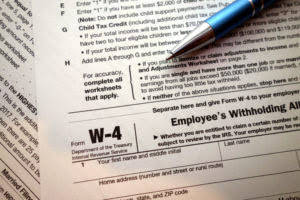
Using the same scenario, if the business sells 200 units, the LIFO calculation for COGS begins with the most recent units. The remaining 120 units come from the February law firm chart of accounts 15 purchase of 150 units at $12 each ($1,440). In order to track stock using the FIFO method, businesses must maintain detailed records of each item’s entry and exit date. However, almost all warehouses today utilize some kind of warehouse management system (WMS) or inventory management software (IMS) to accomplish this task.
Which one is better FIFO or LIFO?
This method prioritizes the most recently acquired inventory, which can significantly impact financial outcomes, particularly in industries like oil and gas, where costs fluctuate frequently. By using LIFO accounting and the LIFO method, you can manage your taxable income effectively, reducing your tax liabilities during inflationary periods. Ending inventory consists of the remaining 80 units (300 total units available – 220 units sold). To determine its value, multiply the 80 units by the https://urdaneta.alcaldia.web.ve/cost-recovery-methods-depreciation-amortization/ weighted-average cost of $11.50 per unit.
Are Patents Assets? How They’re Treated in Accounting
You don’t actually need to sell the oldest item first – but you report the inventory for accounting purposes as if you sold the oldest item first. In the fast-evolving world of electronics, newer models or versions are frequently introduced. By applying the FIFO method, companies can reduce the chances of having outdated products in their inventory. Accurate inventory accounting, in this case, is not just about cost but also about keeping the product range current. Another great feature that comes with using FIFO is the high valuation of the inventory, especially during inflationary times.
Develop business strategies

Inventory costing methods provide a structured approach to valuing the goods a business holds and sells. Two widely used methods for this purpose are First-In, First-Out (FIFO) and Last-In, First-Out (LIFO). These methods help businesses determine the cost of goods sold and the value of remaining inventory, influencing key financial metrics. Yes, you can use FIFO for some products and different inventory valuation methods for others, but with important considerations. IRS regulations require consistency within similar product categories but allow different methods across dissimilar categories. For example, you could use FIFO for perishable goods and weighted-average for commodities.

A separate perpetual inventory card is prepared for each inventory item. This card has separate columns to record purchases, sales and balance of inventory in both units and dollars. The quantity and dollar information in these columns are updated in real how to calculate fifo inventory time i.e., after each purchase and each sale. At any point in time, the perpetual inventory card can, therefore, provide information about purchases, cost of sales and the balance in inventory to date. When evaluating inventory valuation methods, weigh compliance requirements against operational efficiency.

The objective of inventory costing is to allocate the total cost of goods available for sale between two primary financial categories. When using the FIFO inventory system, businesses must also calculate their ending inventory balance. This is the total value of products that remain in stock at the end of a given period. This is calculated by taking the total value of products that enter into inventory and subtracting the cost of goods sold.
First-In First-Out (FIFO Method)
But if your inventory costs are decreasing over time, using the FIFO method will increase your Cost of Goods Sold, reducing your net income. This can benefit businesses looking to decrease their taxable income at year end. Learn when FIFO delivers the most accurate valuation for your inventory costing methods strategy. When deciding which inventory management system to use, it is important to consider the type of products being stored, the impact on financial statements, and other factors. The FIFO method can be an effective solution for warehouses storing perishable items with expiration dates or bulk quantities of non-perishable items without expiration dates.
- So you see, using LIFO, your company reports the higher cost of goods sold because of the increasing cost of inventory and lower gross profit compared to FIFO.
- For calculating COGS using LIFO, the most recently purchased goods serve as the starting point.
- The cost of these 10 items may differ depending on the valuation method chosen.
- Ending inventory holds the key to unlocking crucial insights about your business’s financial health.
- This detailed breakdown is crucial because FIFO assigns costs based on the chronological order of acquisition.
- Using the FIFO method also helps businesses minimize losses from price fluctuations.
You’ll save big on our discounted shipping rates up to 91% off, and save time with smart automation. Use our guided walk-through to build the perfect shipping policy for your eCommerce business. Create your free Easyship account to streamline shipping and save with discounted rates.No hidden fees.
Free Course: Understanding Financial Statements

When you want to select between FIFO and LIFO inventory valuation methods, you must consider the current inventory valuation you use, inflation, financial reporting, and taxes. The remaining inventory would then consist of 2,000 units from the second batch at $1.75 each, totaling $3,500. This method ensures that the ending inventory reflects the most recent market prices, providing a more accurate picture of the company’s inventory cost and financial health. This can have a big impact on your costs of goods sold and profitability, especially during inflationary periods. This inventory valuation method assumes the oldest inventory is sold first, which often means lower COGS and higher profit.
